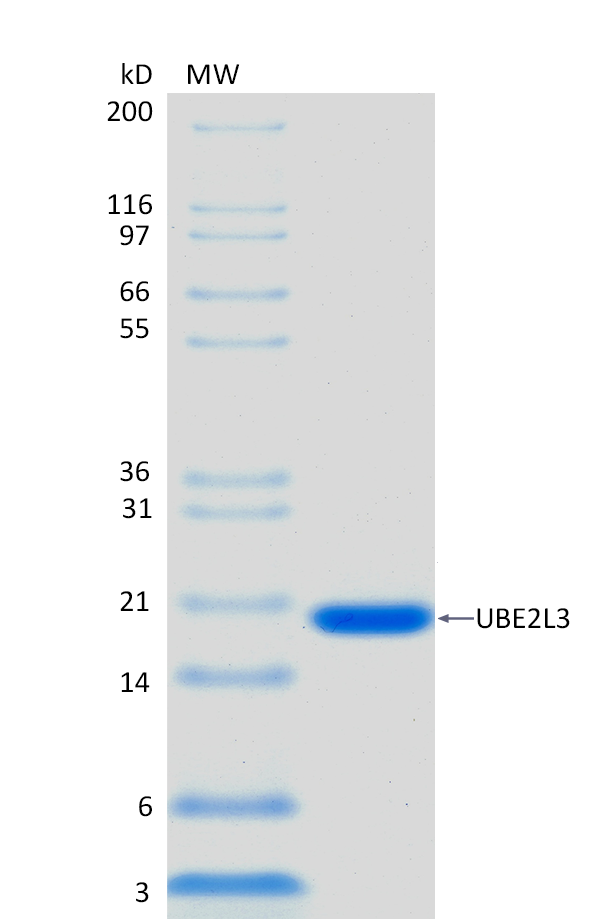 2 μg UBE2L3 run on 4-12% SDS-PAGE gel under reducing conditions
2 μg UBE2L3 run on 4-12% SDS-PAGE gel under reducing conditionsFor Research Use Only (RUO)
Lewis, M., et al., (2015) Am J Hum Genet 96:221-232. PMID 25640675
Horn-Ghetko, D., et al., (2021) Nature 590:671-676. PMID 33536622
Zeng, Y., et al., (2022) Front Mol Biosci 9:872130. PMID 35265070